

Cinthya grabs her cell phone, searches on WhatsApp for her mother's contact, Lupe Calle Peralta, and starts telling her how her day went. If something good happened, she writes. If she is happy, she tells her why. If something unusual occurred, she details the events.
Cinthya writes and writes on her cell phone in the hope that Lupe will answer, but on the screen, there is only a little checkmark: a sign that the message has gone, but did not reach the intended recipient.
As of June 12, 2021, on the other side of the conversation there is only silence.
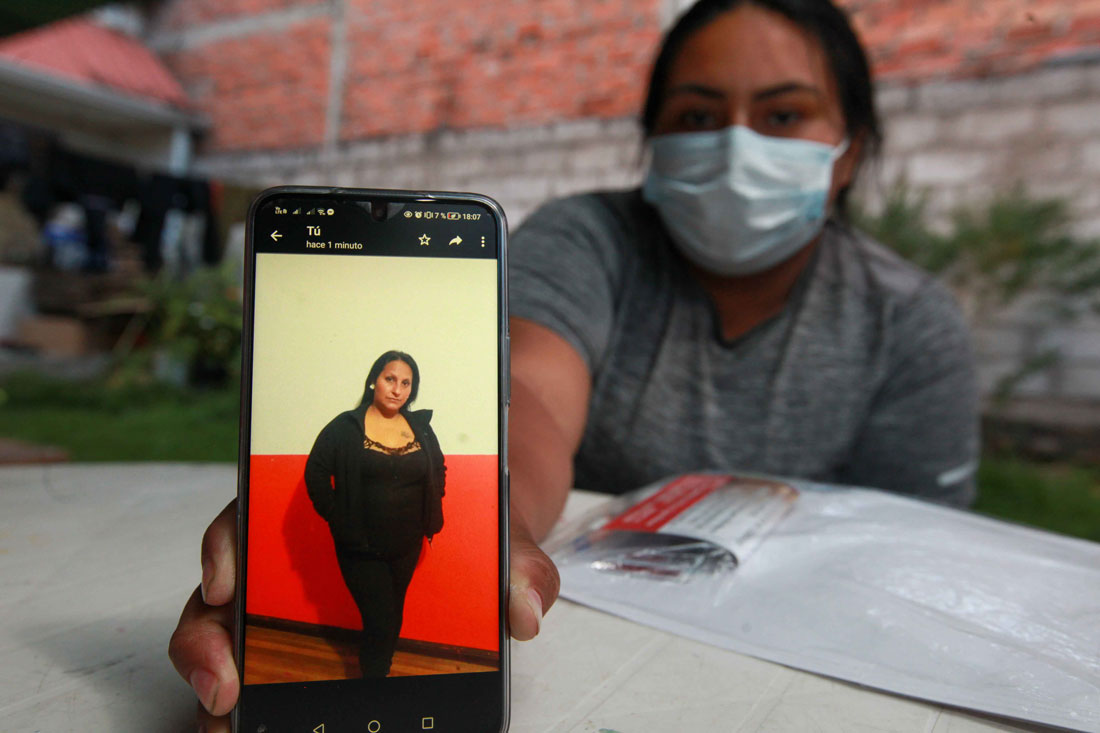
Cinthya sells fruit in El Arenal, the largest wholesale market in Cuenca, Ecuador's third largest city. Until last year, her mother worked at the same place. Lupe owned a "cyber," a space where she rented computers with internet, but the business was not prosperous. When in March 2020 the Ecuadorian government declared a health emergency in response to the spread of Covid-19, everything fell apart. If debts were hard to pay before the pandemic, the situation became even more difficult when businesses were forced to shut down.
“That outraged my sister,” says José Calle, his voice rising in anger.
José is Lupe's brother. Before talking about her, he listens to people who ask him about the case. He analyzes, observes. Since his sister disappeared, he has become quieter, more cautious, as has Cinthya. For example, to arrange an appointment to talk about Lupe's disappearance, he does not share an address until the day before the interview. The interview takes place in an open space, in the courtyard of a house where nothing indicates that a suffering family lives there.
Only once they consider that the time has come to narrate the facts do they stand up, gather their strength take a deep breath.
On May 26, 2021, Lupe Calle left Cuenca to move to Latacunga, a small city in northern Ecuador that had become a departure point for migrants. Because of its direct connection to Mexico, which until August 2021 allowed Ecuadorians to enter without a visa, the Latacunga airport became the ideal place to leave Ecuador and carry out the plan that thousands of Ecuadorian families have had since the last century: to reach the United States, make money, and send it to the children, parents and siblings they had to leave behind.
Lupe had the same idea. She would leave Cinthya, her oldest daughter, in charge of her other three children, ages 23, 12 and 8, and travel to the United States without documents. The journey, the crossing and the arrival in the United States had already been made by two of Lupe's sisters more than two decades ago. Now, Lupe believed, it was her turn.
“I found out about my sister's trip when she was about to leave,” says José. “I asked her if she was sure. I asked her who she was going with, who was going to take her there, and she told me to calm down, that everything was ready. From there things started to go wrong.”

Unlike the rest of the family, Cinthya knew who her mother had hired for the trip. She knew the cost, the itinerary and the route — mainly the route: Latacunga-Mexico City-Ciudad Juárez-United States.
“Mom left Cuenca on May 26. She spent ten days in Mexico City and then she was taken to Ciudad Juárez. She stayed there until June 11. The contract that had been made was that she was not going to go through the desert, that she was not going to pass through there,” says Cinthya.
The family did not want anything to do with the desert in the United States, especially if someone had to walk through it. The reason is that in 2020 the media, mainly those that operated in the Ecuadorian Austro, formed by the provinces of Cañar, Morona Santiago, and Azuay — whose capital is Cuenca — began to repeat the word "desert" in news stories about the extreme heat of summer in the American West, the difficulty of walking through the arid lands, and the abandonment — and later disappearance — of the migrants. That frightened families who were thinking of migrating.
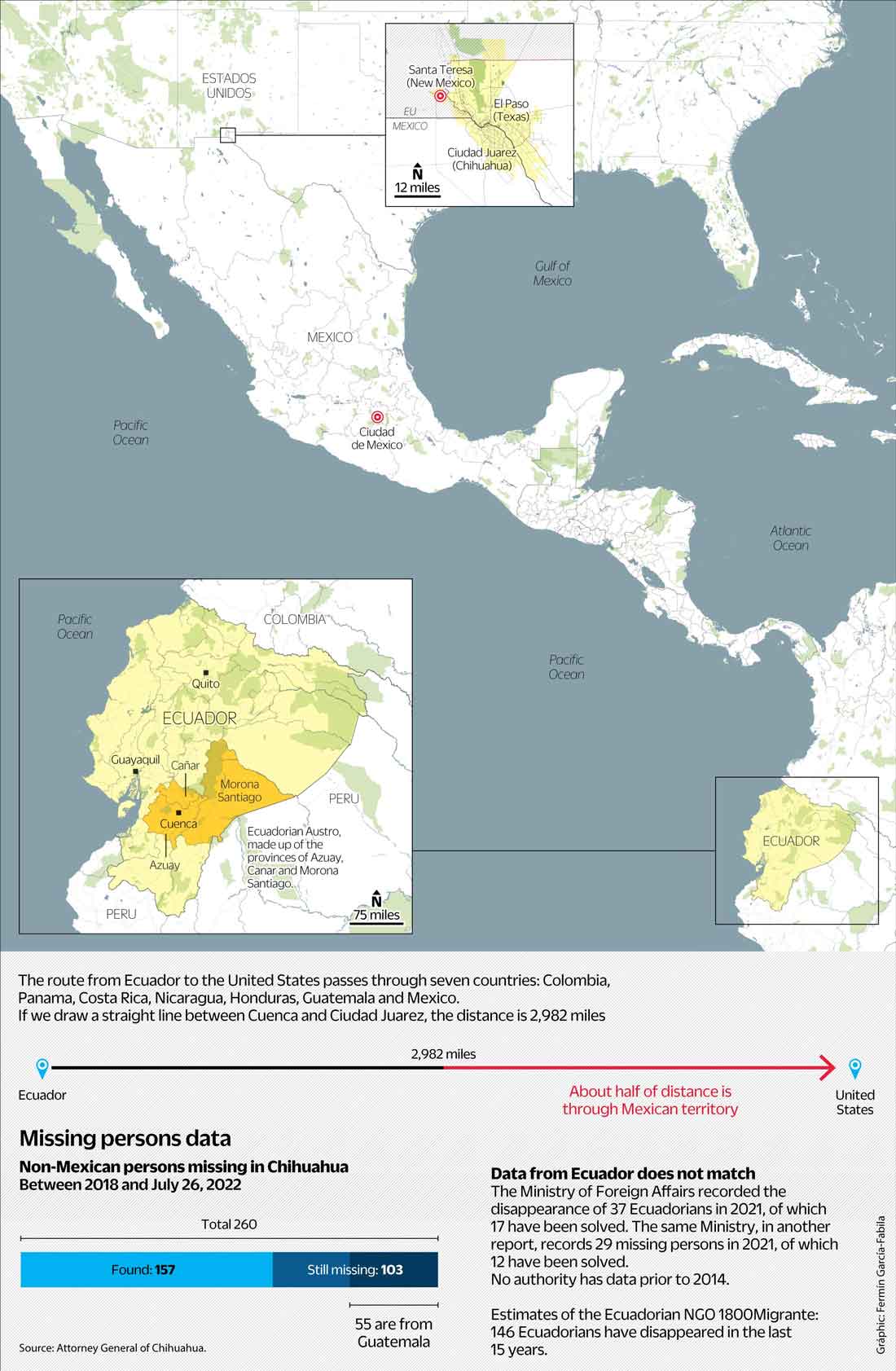
Fearing that something might happen in the harsh desert, Lupe and her daughter agreed to pay $17,000 for the coyote — a word used to refer to people who smuggle migrants — to avoid the desert region, which had brought tragedy to many Ecuadorian families.
“A friend of my sister's had already traveled with this coyote, who had taken her to the United States very quickly. There was a good reference,” recalls José.
According to the plan, once in Ciudad Juárez, they would leave in a vehicle for a two-hour trip. Then, according to what the coyote had said, they would have to walk for two or three hours at most and they would arrive in the United States. But none of that happened. Cinthya received a message from Ciudad Juárez informing her that the agreed route "was burned.”
“That the route ‘was burned’ meant they couldn't go that way because many people had already been caught. It was dangerous,” explains Cinthya. “If she wanted to go the same route, Mom would have to wait two months and there was no money to wait. So what she had to do was walk through the desert,” says Cinthya.
Between June 7 and the evening of June 11, 2021, Lupe sent messages to Cinthya. “We are leaving tomorrow. We are leaving tomorrow.” But they did not leave Ciudad Juárez. On June 11, Cinthya received a message in which her mother assured her that they were heading toward El Porvenir, Chihuahua. One day later, she said, they would start walking toward the United States.
On Saturday, June 12, at eight o'clock in the morning, Lupe sent her another message via WhatsApp: "They are going to take away our cell phones. Between Monday and Tuesday, God willing, we will be there.”
That was the last message Cinthya received from Lupe. That was the last time Cinthya heard from her mother.
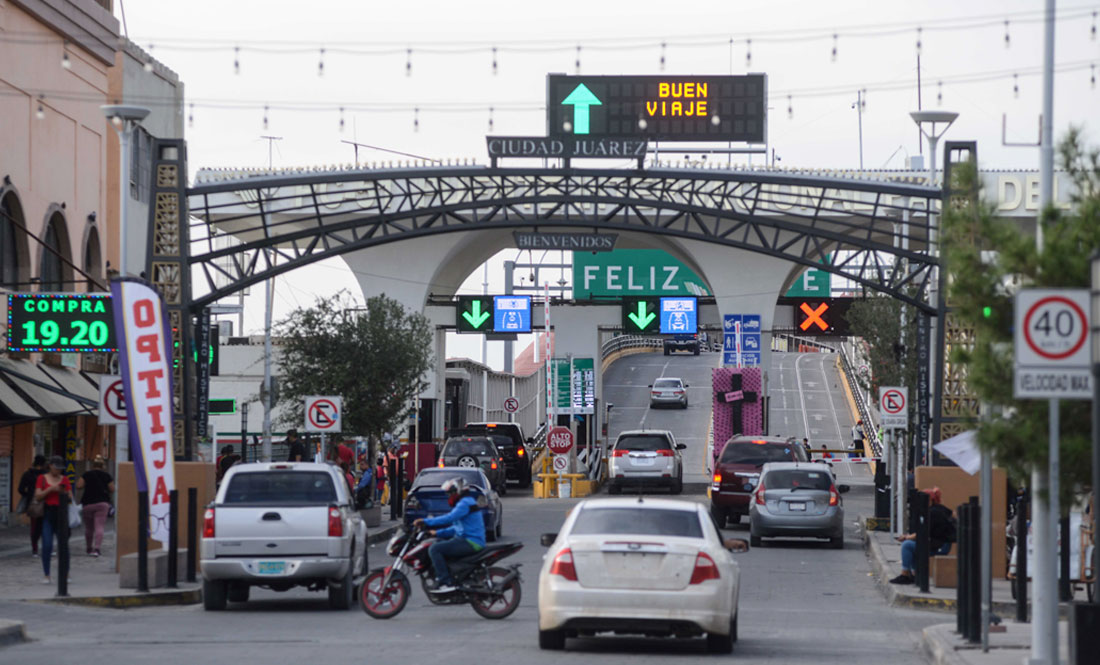
Ciudad Juárez is a bustling industrial city in the Mexican state of Chihuahua that borders the states of Texas and New Mexico. Because of its location, it has long been a route for migrant traffic heading north, defying desert conditions and the violence of organized crime. It has also been a hub of activity for the maquiladora industry for more than 50 years, which has driven disorderly urban growth that persists to this day.
This city is home to more than 1.5 million inhabitants, almost 40 percent of whom are migrants from other states and countries. In the last decade, more than 13,500 people were murdered in Ciudad Juárez as a result of the so-called "war on drugs" initiated by then-President Felipe Calderón.
The U.S. border wall has been a reality in this region for more than two decades. On a sandy landscape a few meters from the edge of towns to the northwest, a metal fence stretches for miles. The wall was built there in September 1995 during the presidency of George W. Bush. At the time it was cyclone mesh. But in mid-2016 it was replaced by a metal wall on the banks of the Rio Grande.
The wall divided a binational community with a thriving economy that, according to data from agencies in both countries, averages 60,000 legal border crossings a day, people who move between Ciudad Juárez, El Paso and Santa Teresa — or vice versa — for business, school, cultural events or family visits. That is why Juárez is the second-busiest border crossing in northern Mexico. It shares six international crossings with the United States, five of which are bridges and one land crossing.
In recent years, with the increased security at the border, the routes for migrants attempting to enter the United States without documents have become more dangerous, not only because of the risk involved in crossing the desert or the river, but also because for migrants who require a visa to enter Mexico — and this is the case of Ecuadorian citizens — passing through Mexico has added to the treacherous journey. The usual routes for crossing Mexico because they were the shortest — the states of Tamaulipas or Nuevo Leon ¬— were abandoned after massacres in San Fernando, Tamaulipas, in 2010 and in Cadereyta, Nuevo Leon, in 2012, by the Zetas drug cartel. Chihuahua then became the route used by the coyotes.
For the past two years, Chihuahua has been at the top of the list of states with the most migrants reported missing. Not only is organized crime an ever-present danger for undocumented migrants, Chihuahua also has the most detentions by the Mexican immigration authorities, according to data from the Mexican government.
Before her voice breaks, Cinthya tells what happened after the last message.
“I wrote to the coyote on Sunday and she told me everything was fine. On Monday she told me that they should be arriving right away. But on Tuesday she called me and asked me if I had communicated with Mom and then she asked me for her number, which I thought was strange. On Wednesday, at about noon, the coyote told me that Mom stayed behind, that she didn't go any further. She told me to call immigration in Sierra Blanca (Texas), because they didn't know where she was,” she recalls.
That she was left in the desert, that she was fine, that she was sick or hurt, that she didn’t want to continue. Stories and contradictions swirled around Cinthya when people found out that Lupe had disappeared. In the following days, the family became active on social networks. They joined the groups of families of missing persons on the border of Mexico and the United States that operate on Facebook so they could publish Lupe's photo. They denounced the coyote to the Azuay Prosecutor's Office, and reported their situation to the Ministry of Foreign Affairs and Human Mobility, the Ecuadorian government agency that is responsible for helping the families of missing migrants.
“It's been a year and I don't know anything about my Mom,” says Cinthya. “Since I published the photo of my Mom, people have extorted us, they have robbed us, they have lied to us, telling us that they have my Mom, that we should pay them and they will release her. But it is all a lie. There is no trace of her.”
Lupe is part of the massive migration to the United States that Ecuador experienced in 2021, and one of countless missing migrants over the past 20 years. These actual numbers are ambiguous and uncertain. What is certain is the common story behind the journey: an economic need, a desperate situation, hiring a coyote, the arrangements, the uncertainty of the journey, and a last message.
Unlike the last years of the 20th century and the first years of the 21st century, when the families of Ecuadorian migrants only knew they had arrived safely once they were in the United States, in the disappearances of recent years there has always been a last message. WhatsApp, Facebook, videos, voice messages and the internet became effective means of communication not only to tell the story of the journey, but also to leave a last trace, a last sign of life on a screen.
Without these tools, Cristian Lupercio and Evelin Quichimbo, both from the province of Azuay, would not have been able to say before disappearing on November 27, 2020, that they were going to turn off their cell phones to cross from Ciudad Juárez to the United States.
Luis Mainato, a native of Cañar (neighboring province of Azuay), would not have been able to tell his family, before disappearing on February 19, 2021, that he was about to leave Piedras Negras.
José Palate, from Ambato (a central city in Ecuador), would not have said on May 29, 2021, before disappearing that he had already passed to the "other side" from Ciudad Juárez.
Lizbeth Yolanda Topón, from Cuenca, would not have sent a video before disappearing on August 27, 2021, in which she said she was already in El Paso, Texas.
A text, a photograph, a video. A last message from the Ecuadorians who disappeared trying to reach the United States.
In Ecuador, people talk of “waves” of migration to define the periods during which there have been a greater number of people migrating. The first of these massive migrations — and the least known by the generations of the last thirty years — is the one that began in the 1960s. According analysts who have studied the country’s migration patterns, the Ecuadorian population began to migrate to the United States when the sales of the Panama Hat, which was made in the Austro, plummeted.
The second “wave,” which is the one most clearly identified in the country, began in the mid-1990s and lasted until the early years of the 21st century. According to a study by the Latin American Faculty of Social Sciences (FLACSO), 18,000 people left Ecuador in 1996 and had not returned by 2001; in 1998 the figure rose to 34,000, and by 2000 there were 107,000.
Unlike the first mass migration that had already driven the inhabitants of the Austro to seek a secure income in the United States, the second period of migration spread throughout Ecuador in the second half of the 1990s and the first year of the 21st century. The reasons: political instability — two presidents overthrown in 1997 and 2000 — and, once again, economic decline. In 1999, unemployment in Ecuador reached 15.1%, and in 2000 the poverty level of Ecuadorians reached 71%, according to data from the Central Bank of Ecuador.
The peak of the second mass migration would begin on January 9, 2000, the day Ecuador adopted the dollar as its official currency. For many, that marked an economic breaking point. Some 560,000 people left Ecuador that year, the highest figure ever recorded.

In 2020 and 2021, it wasn’t only Covid-19 that was being discussed in Ecuador. By the middle of the first year of the pandemic, William Murillo, former director of the now-defunct National Secretariat for Migrants (SENAMI) and co-founder of 1800Migrante, a legal consulting firm that provides advice to Ecuadorian migrants, was warning of a new massive migration.
"One of our biggest concerns is that, after looking at the difficult economic situation in Ecuador right now, we could have a new wave of migration to the U.S. and consequently an increase in fatalities and disappearances," Murillo said in a June 11, 2020, statement.
Although he glimpsed the shift in migration patterns as he followed up on cases of missing persons, deaths and detentions of Ecuadorian migrants at the U.S-Mexico border, this third mass migration had been developing since 2018. On November 29 of that year, the Mexican government announced that Ecuadorian citizens no longer needed a visa to enter the country. To comply with Mexican entry requirements, Ecuadoran citizens only needed to show that they had hotel reservations and return airline tickets. That’s when the numbers began to grow.
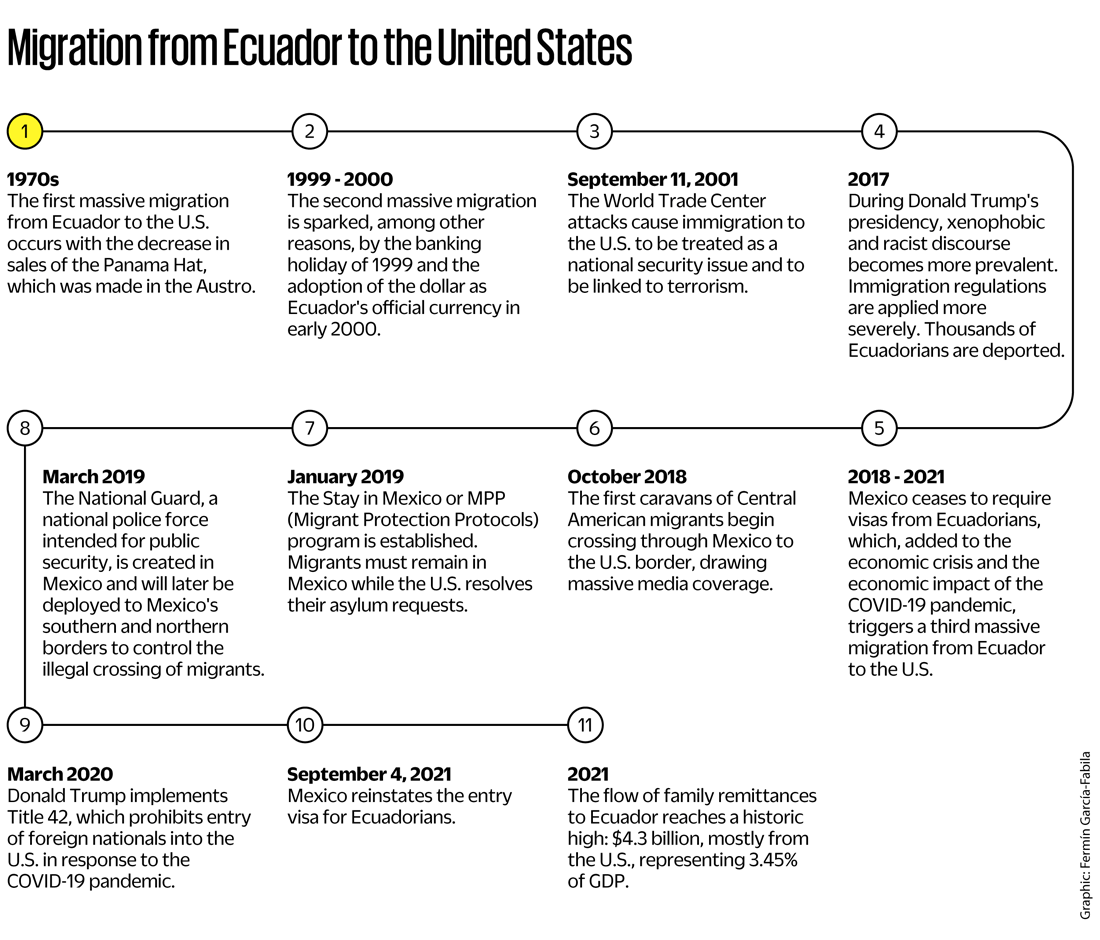
In 2019, the Ecuadorian Ministry of Government’s records showed that 119,268 Ecuadorians departed for Mexico, but only 102,77 returned; that is, at least 16,489 Ecuadorians remained outside the country. In 2020, during the pandemic, 53,802 Ecuadorians traveled to Mexico, but only 39,173 returned to Ecuador, a balance of 14,629. In 2021, the numbers were even higher: 127,134 Ecuadorians went to Mexico, and only 57,784 returned. The 69,350 people who did not return were mostly from the provinces of Azuay and Cañar. Once again, the communities and villages of the Ecuadorian Austro were experiencing an exodus to the United States.
The third wave of migration was confirmed by the number of detentions of Ecuadorians at the U.S.-Mexico border. According to U.S. Customs and Border Protection data, detentions in 2021 increased from 5,579 in March to 17,611 in August. Information from Mexican authorities indicates that from 2019 to July 2022, some 646 Ecuadorians were detained in Chihuahua, 97 percent of them during 2021 and the first seven months of 2022. Most of the arrests were recorded in the region of Ciudad Juárez where the headquarters of the delegation of the National Institute of Migration is located.
That there was a surge of migrants from Ecuador to the United States was no longer a remarkable event. What was remarkable was the fact that many of them had disappeared.

Claudio Javier Ramón Ordóñez, a 37-year-old farmer and miner, abandoned his work equipment and left his four children in mid-2021 to travel to the United States via Mexico. At the end of July 2021 his family received a message that Claudio had been kidnapped in Ciudad Juárez.
Claudio was born in Dandan, a rural community in the province of Azuay. It is surrounded by mountains, close to the desert, dusty, and baked by an intense sun. The only way to get there is on winding, unpaved roads. There is very little shade and few trees. Water is scarce, so agricultural work is becoming less productive.
The Ramón Ordóñez family settled in this hardscrabble region 38 years ago. Their seven children grew up there. They all worked in agriculture and over time the children stopped studying to grow onions, tomatoes and other crops.
By the early 2000s, poverty, a common denominator in homes of this region, was suffocating the family’s teenage children. Neighbors and family members were migrating to the United States and stories of success and how much someone could earn were talked about everywhere. That convinced Claudio’s sister, who we will call Miriam, to leave for the United States at the age of 17. She has not returned since.
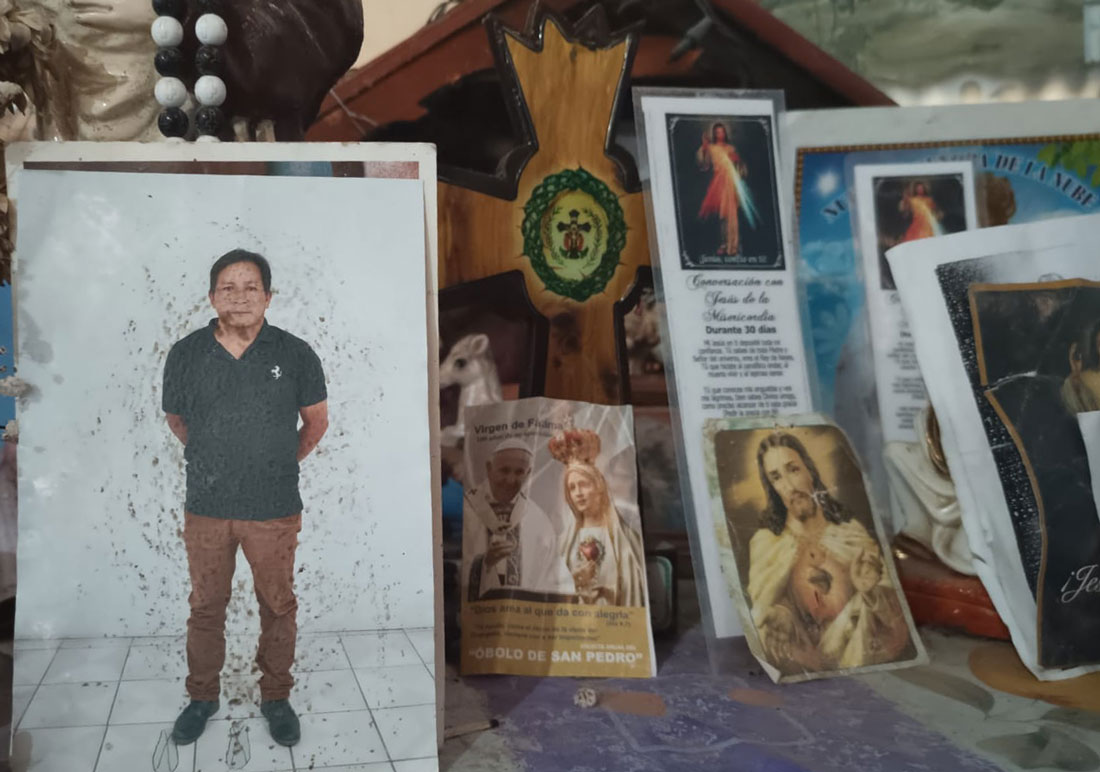
Claudio had different plans. He wanted to work the land, raise a family and live close to his parents. When he was 17, he moved to a community where water was not a problem and where he could dedicate himself to cultivating the land. Claudio fell in love and had his first daughter, now 16 years old, although he later separated from her mother. He then met the mother of his second son, now 12 years old, from whom he separated two years later. A third relationship gave him stability and with his wife Paola he had two more children, a boy and a girl who are now 10 and 8 years old.
Claudio had refused on several occasions to follow his sister Miriam's example, but with the economic crisis caused by the Covid-19 pandemic, it was Paola who decided to migrate. The week his wife left, Claudio visited his parents and told them that he would leave to join Paola in the United States as soon as she arrived. His mother, Mercedes Ordóñez, tried to dissuade him.
“Come live here, with us. You can live in your sister's house,” Mercedes told him. But Claudio was determined. He had seen for years how his sister had been sending money for the family. In the United States she didn’t suffer from the aching necessities of daily life that her family faced in Dandan.
“He left with the conviction of working to provide for his children's education,” says Mercedes.
Father and mother accompanied Claudio to the coyote and agreed on the trip for $17,000, with the condition that he would not have to go through the desert. That afternoon they gave the coyote $5,000. A second payment was to be made when Claudio reached Mexico, and the last part was to be paid when he crossed the border. The deal was struck. The coyote said Claudio would arrive in 8 to 12 days. In July 2021, after receiving his parents' blessing, Claudio left. He left his young children in the care of his wife’s mother, as Paola had arranged.
In Ecuador, everyone knows the economic impact of remittances sent by Ecuadorians working in the United States. Everyone knows how much the coyoteros earn from the smuggling of migrants. The statistics on flights with deportees to Ecuador are available for anyone who consults them. But what is not known is the real number of Ecuadorians missing at the U.S.-Mexico border, because there is no system that documents all the cases of the disappeared. Even the Ministry of Foreign Affairs and Human Mobility (MREMH), which is tasked with helping the families of missing migrants, has contradictory information.
For this report, the number of missing migrants on the U.S.-Mexico border was requested, but the MREMH only shared records dating back to 2019. To obtain data prior to that year, they suggested contacting the Attorney General's Office of Chihuahua. The prosecutor's office responded that the information does not appear in the system because “it is not the responsibility of the Attorney General's Office to keep the statistics of missing Ecuadorian migrants on the route to the United States, by virtue of the fact that such power rests with the MREMH.”
Interestingly, the local office of the MREMH that serves the Ecuadorian Austro does have data since 2014, but the information differs from the statistics that MREMH uses. For example, in 2021, the local office received reports of 66 disappearances, of which 41 were resolved, while MREMH general data recorded 29 cases of which 12 were resolved.
The discrepancy is also reflected in the MREMH's 2021 accountability report, and the data that the agency shared for this report. According to MREMH’s accountability report, 37 disappearances of Ecuadorians were registered on the U.S.-Mexico border. Of that number, 17 are listed as solved. In the MREMH records shared for this report, in 2021 there were 29 missing persons and only 12 were found. How can the disappearances of Ecuadorian migrants be taken seriously when there is no accurate data in the Ministry that is responsible for looking after those who left Ecuador?
“Registration has been a problem,” explains Cristian Zhimnay, director of the Research Group on Population and Sustainable Local Development (PYDLOS) at the University of Cuenca, the most prestigious public education institution in the Ecuadorian Austro. “There are no statistics, and I believe that the government reduced their efforts to control or encourage them to return or leave [to the United States]. They just let it be. It's like ‘let's see what happens.’ ”
PYDLOS has identified the massive outflow of Ecuadorian citizens to the United States with the assistance of non-profit organizations and foundations that have taken on work that should be led by the government. An example of this is in the Migration Governance Indicators (IGM) report for Ecuador, published by the International Organization for Migration in 2021.
According to the IGM, Ecuador "does not have a constant and structured mechanism of interaction for the construction and evaluation of public policies on issues of interest to the Ecuadorian migrant community,” and it is noted that the number of Ecuadorians who left for Mexico and did not return in the first half of 2021, represents “a possible risky migration.”
While Ecuador was registering international departures and remittances from the United States, Mexico decided on August 20, 2021, to ask Ecuadorians for a visa again. Initially the measure would only be in effect from September 4, 2021, to March 4, 2022, but the Mexican government decided to extend the measure indefinitely. This restriction drastically reduced the number of departures from Ecuador to Mexico. From the 22,982 registered in August 2021, the number dropped in September to 6,518. In December it dropped again to 2,269. When free transit to Mexico was closed to Ecuadorians, the routes that the coyotes had used more than thirty years ago returned -- direct trips to Central America, travel over land, and crossing through Mexico to reach the northern border. It is more expensive, up to $20,000 for one trip, but most of all it is more dangerous.
On April 2, 2022, two brothers from Cuenca and a young man from Azogues died in a traffic accident in Guatemala while trying to reach the U.S.-Mexico border.
On August 12, a van transporting migrants in Veracruz overturned. Three Ecuadorian women, including a one-year-old girl, died, while a 14-year-old girl, a seven-year-old boy, and a 23-year-old girl —all from the same family from Cuenca— were seriously injured.
While Ecuador was registering records of departures abroad and remittances from the United States, on August 20, 2021, Mexico decided to ask Ecuadorians for a visa again. Initially the measure would only be in effect from September 4, 2021, to March 4, 2022, but the Mexican government decided to extend the measure indefinitely. This restriction drastically reduced the number of departures from Ecuador to that country: from the 22,982 registered in August 2021, in September the figure was 6,518, and in December it dropped to 2,269. But when the free transit was closed, the routes that the coyotes had traced more than thirty years ago returned: direct trips to Central America, mobilization by land, and crossing through Mexico to reach the northern border. It is more expensive, up to $20,000 for one trip, but most of all it is riskier.
On April 2, 2022, two brothers from Cuenca and a young man from Azogues died in a traffic accident in Guatemala while trying to reach the U.S.-Mexico border.
On August 12, a van transporting migrants in Veracruz overturned; three Ecuadorian women, including a one-year-old girl, died, while a 14-year-old girl, a seven-year-old boy, and a 23-year-old girl —all from the same family from Cuenca— were seriously injured.
If Claudio is just a number to authorities, for the Ramón Ordóñez family the last year has been a wound that cannot heal.
One day after leaving Cuenca in July 2021, Claudio called his sister, told her that he was already in a hotel in Mexico and that he was fine. It was up to the family to make the second payment, about $4,000. Claudio's calls continued and his first attempt to cross ended in detention by border agents. On July 26, he said he’d make a second attempt. But the day passed without news and Mercedes felt that something had gone wrong. She was right. Claudio had been kidnapped.
On July 27, a photo flashed on Miriam’s cell phone. In the photo, Claudio was sitting on what seemed to be a bed, tied at the feet with a thin white rope. Fear was etched on his face. His captors demanded $15,000 for his ransom. Miriam and other family members managed to collect $12,000 and deposited it in a bank account. The kidnappers told her that when she deposited the remaining amount, they would release her “carnal.” That was the last time the kidnappers answered the phone. Mercedes’ children hid the truth from her as long as they could. She found out a month later.
Mercedes' expression ranges from sadness to a resignation that she still struggles to find. Her voice, sometimes slow and soft, is marked by the anguish of Claudio's uncertain fate, and by the suffering of his second son, who is the closest to his grandparents and who cannot accept the idea of losing his father. So far in 2022, 17 more families have reported having a missing relative on the migration route. Perhaps some ask God to at least let them know if their family member is alive or not, like Mercedes does when she lights a candle for her son and saves a place for him at the dinner table. She just wants to know if Claudio is alive or dead so she can close this painful chapter in her life.

This project is a collaborative investigation by El Mercurio in Ecuador and La Verdad Juárez
